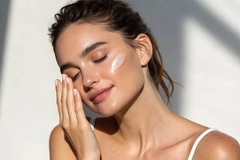Vividye to produce environmentally-friendly dye replacements for cosmetic industry
Swedish textile pigment start-up Vividye is expanding its color expertise honed in the textile industry to the cosmetic sector. The company focuses on sustainable approaches to developing functional pigments for garment textiles and plans to supply pigment offerings for makeup and hair color applications.
“Moving into cosmetics felt like a natural next step,” says Vividye CEO Johanna Nissén Karlsson. “The cosmetics industry faces distinct challenges, including stringent regulatory demands and high consumer expectations for product safety and environmental sustainability. Our technology offers a better alternative to traditional dyes, and we’ve seen a growing need for this in products that people use on their skin and hair,” she says.
Vividye uses techniques in surface chemistry to produce high-quality pigment particles that adhere to material surfaces. This approach means the company can modify pigments to meet specific coloration goals for clients.
Gustav Larsson-Utas, chief operating officer at Vividye, tells Personal Care Insights that the company’s goal is to create pigments for any brands hoping to exchange cosmetic dyes for sustainably produced pigments.
Cosmetic colorants
The company says it avoids using plastic-based, film-forming agents in its coloration process, which offers a sustainable approach to color solutions. Instead, it focuses on non-toxic pigment materials designed to avoid environmental buildup or water contamination.
Larsson-Utas says Vividye now that the company has proven its pigmentation approach in textiles it is looking to expand coloration innovation to other markets. Vividye CEO Johanna Nissén Karlsson and COO Gustav Larsson-Utas. Photo courtesy of Vividye.
Vividye CEO Johanna Nissén Karlsson and COO Gustav Larsson-Utas. Photo courtesy of Vividye.
“With technology like ours, the only limitations are within our imagination.”
The company is backed by Chalmers Ventures, a deep tech investor that helps companies jump from lab to market. In 2020, Vividye won the H&M and Elle Conscious Award for its textile pigment technology, which allows color to be added and removed from clothing without damaging the textile fibers. This breakthrough means old garments can gain new life through re-coloring, extending the product’s lifespan, said the Vividye co-founders to Elle.
Colorant regulation
Pigments and dyes are being scrutinized more closely in cosmetics to ensure consumer safety. In the US, colorant regulation is expanding under the Modernization of Cosmetics Regulation Act (MoCRA), which is designed to increase safety substantiation, mandatory event reporting, and consumer protection.
Personal Care Insights spoke to Elisa Esteve Codina, a safety and regulatory affairs manager at Cosmeservice, about how colorants are specifically handled under MoCRA and what drives the regulation.
“MoCRA demands greater transparency regarding cosmetic ingredients, including colorants,” Codina told us.
“Brands must be clear in labeling their products, as consumers are increasingly aware and demanding when it comes to the safety and composition of the cosmetics they purchase. Incorrect labeling or omission of relevant information about colorants can lead to distrust and damage a brand’s reputation, ultimately affecting its market position.”
Similarly, the US Food and Drug Administration announced a fee increase for color additive approval last month. We reported on industry stakeholder’s mixed reactions as a result of the fee increase.













